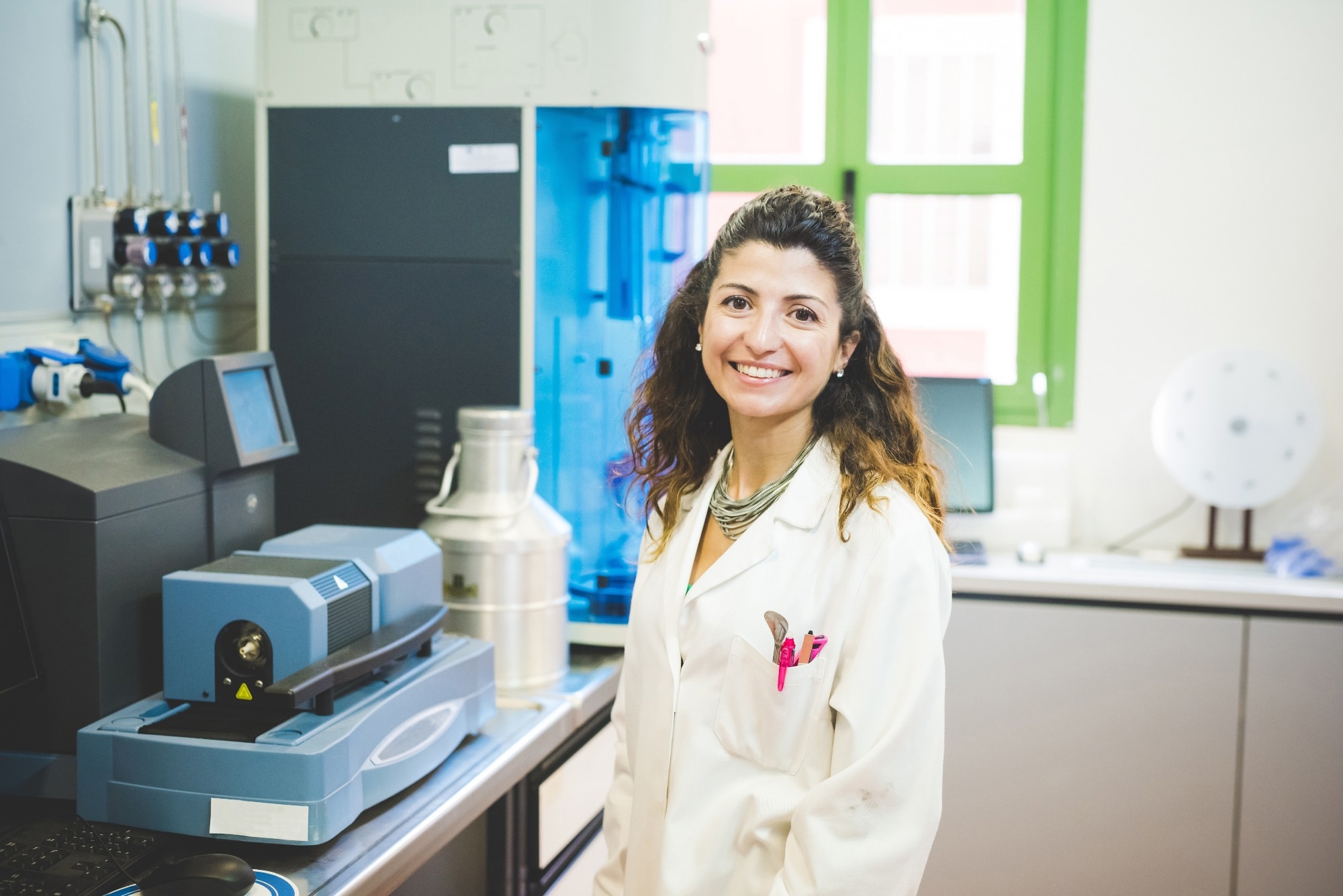Scientists have shown CrOCl’s layered structure remains stable at high temperatures, making it a strong contender for next-generation CMOS and spintronic devices.

Image Credit: Connect Images - Curated/Shutterstock.com
A study published in Advanced Materials Interfaces has demonstrated that CrOCl, a two-dimensional transition metal oxyhalide, retains its structural and magnetic properties at much higher temperatures than those required in semiconductor processing.
Using differential scanning calorimetry, thermogravimetric analysis, temperature-dependent X-ray diffraction, and Raman spectroscopy, researchers examined the thermal stability of CrOCl in bulk, few-layer, and monolayer forms.
Why CrOCl Stands Out
CrOCl has emerged as a promising material thanks to its layered antiferromagnetic structure and remarkable stability. It crystallises in a low-symmetry orthorhombic Pmmn structure, consisting of Cr–O double layers separated by chlorine atoms. The weak interlayer bonding, comparable to graphene and MoS2, means exfoliation can readily occur into individual two-dimensional layers or more complex heterostructures.
Its strong optical and magnetic anisotropy gives rise to unique behaviours, such as commensurate-incommensurate phase transitions, antiferromagnetic-ferrimagnetic switching, spin-phonon coupling, and the formation of magnetic superstructures. So far, most of the research on CrOCl has focused on its magnetic properties, but thermal stability is equally crucial for high-temperature fabrication processes.
Rigorous Testing Across Dimensions
The team synthesised high-quality single-crystalline CrOCl flakes using chemical vapor transport of high-purity Cr2O3 and CrCl3 powders. The crystals were grown in a temperature gradient between 810 °C and 950 °C inside a custom-built quartz tube furnace.
X-ray diffraction and scanning transmission electron microscopy confirmed the crystal structure and quality. Raman, X-ray photoelectron, and wavelength-dispersive spectroscopy analysed exfoliated flakes before and after heating. Differential scanning calorimetry and thermogravimetric analysis in an inert argon atmosphere probed decomposition mechanisms up to 1000 °C, and magnetic properties were measured with a physical property system.
High-Temperature Performance
The CrOCl crystals showed excellent resilience under ambient conditions, with no visible degradation even after extended air exposure or exfoliation.
Thermal analysis revealed a two-step decomposition process: The first transition from a solid to a liquid occurred at around 550 °C, while the second transition, near 620 °C, marked the onset of thermal decomposition, as evidenced by structural and stoichiometric changes and a sharp drop in heat flow.
The slight temperature discrepancy (~20 °C) between DSC and TGA was attributed to differences in measurement principles and activation energy barriers.
Raman spectroscopy confirmed that the thinning of CrOCl layers slightly reduces stability. For monolayer and few-layer samples, decomposition began between 500 °C and 550 °C, still well above the typical 350-400 °C required for CMOS fabrication. Raman intensity dropped as temperature increased, indicating reduced crystallinity and increased defect formation.
The high-temperature phase change also led to chlorine release and the formation of a surface chromium oxide (Cr2O3) layer, which helped limit further degradation.
Download your PDF copy now!
Implications for Future Devices
These results demonstrate that CrOCl’s combination of environmental durability, high thermal resistance, and preserved magnetic behaviour even in monolayer form makes it a strong candidate for CMOS-compatible, magnonic, and spintronic devices.
Journal Reference
Banerjee, R. et al. (2025). Thermal and Magnetic Stability of van‐der Waals Antiferromagnet CrOCl from the Bulk to Monolayer Limit. Advanced Materials Interfaces. DOI: 10.1002/admi.202500278.
Disclaimer: The views expressed here are those of the author expressed in their private capacity and do not necessarily represent the views of AZoM.com Limited T/A AZoNetwork the owner and operator of this website. This disclaimer forms part of the Terms and conditions of use of this website.